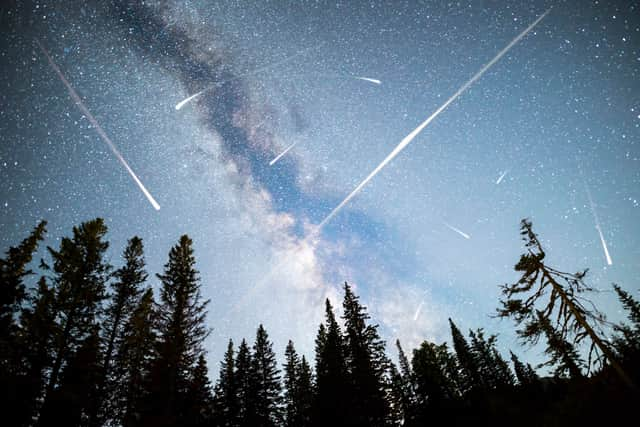James Webb Space Telescope: Nasa spots galaxies like our own in early universe
and live on Freeview channel 276
A surprising number of galaxies, similar to our own, have been spotted in the early universe, scientists have said.
A team of international researchers used Nasa's James Webb Space Telescope (JWST) to look back at some galaxies that formed around 10 billion years ago.
Advertisement
Hide AdAdvertisement
Hide AdThe researchers, which include those at The University of Manchester and the University of Victoria in Canada, used the JWST to discover galaxies like the Milky Way are 10 times more common than what was believed based on previous observations with the Hubble Space Telescope.


The Milky Way is a typical disc galaxy, which rotates about its centre and often contains spiral arms in a similar shape to a pancake or compact disc.
It's thought that these galaxies might be the kind where life can develop given the nature of their formation history, experts suggest.
Previously, it was thought that these types of galaxies were too fragile to exist in the early universe when galaxy mergers were more common, destroying what was thought to be their delicate shapes but the finding will prompt scientists to rethink their understanding of how the universe formed the structures around us.
Advertisement
Hide AdAdvertisement
Hide AdChristopher Conselice, professor of extragalactic astronomy at The University of Manchester, said: “Using the Hubble Space Telescope we thought that disc galaxies were almost non-existent until the universe was about six billion years old, these new JWST results push the time these Milky Way-like galaxies form to almost the beginning of the universe.”
He added: “These JWST results show that disc galaxies like our own Milky Way, are the most common type of galaxy in the universe.
“This implies that most stars exist and form within these galaxies which is changing our complete understanding of how galaxy formation occurs.
“These results also suggest important questions about dark matter in the early universe which we know very little about.”
Advertisement
Hide AdAdvertisement
Hide AdThe researchers say their findings, published in the Astrophysical Journal, completely change the existing understanding of how scientists think the universe evolves. Scientists say new ideas need to be considered.
Lead author Leonardo Ferreira, from the University of Victoria, said: “For over 30 years it was thought that these disc galaxies were rare in the early universe due to the common violent encounters that galaxies undergo.
“The fact that JWST finds so many is another sign of the power of this instrument and that the structures of galaxies form earlier in the universe, much earlier in fact than anyone had anticipated.”
Comment Guidelines
National World encourages reader discussion on our stories. User feedback, insights and back-and-forth exchanges add a rich layer of context to reporting. Please review our Community Guidelines before commenting.
